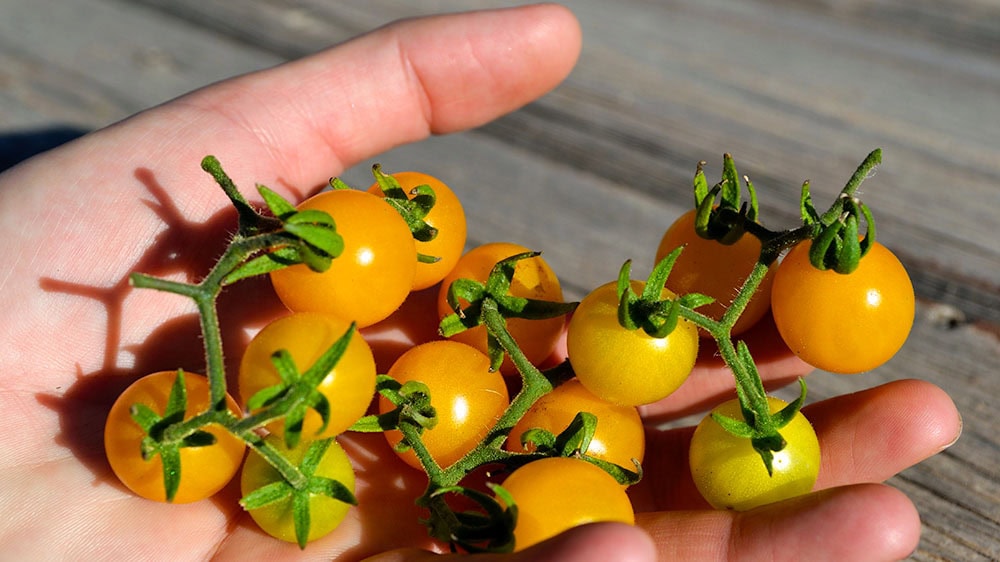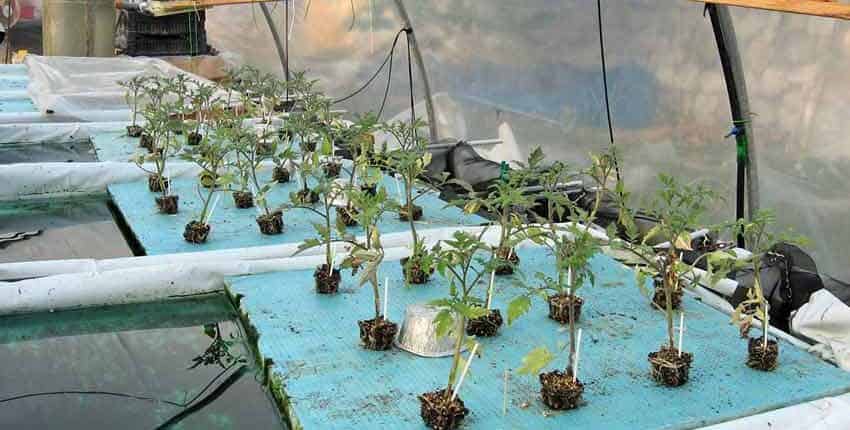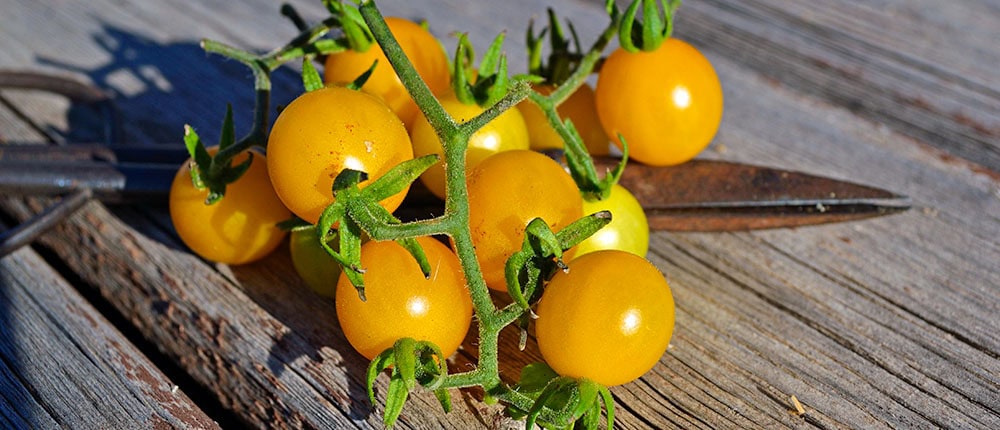The Wild Galapagos Tomato
The Wild Galapagos tomato, scientifically known as Solanum cheesmaniae, is a unique variety with a fascinating history and origins in the Galapagos Islands.
This wild tomato has piqued the interest of home gardeners and researchers alike because of its exceptional resilience and adaptability. It has adapted to thrive in specific environments across the islands, from the rocky coastal shores to the volcanic slopes further inland.
Here at Terroir Seeds, we’re delighted that our customers, like Dr. Eduardo Pantenalla, a researcher in Aquaponics from the University of Tuscia, Italy, have used our Wild Galapagos tomato seeds for innovative research, including exploring its potential for saline aquaponics—a sustainable way to grow food in areas where traditional agriculture is challenging. This research highlights one of the many exciting avenues for crop improvement this remarkable tomato offers.
Wild Galapagos tomato plants growing under controlled agronomic techniques with about 8-10 times more salinity than usually tolerated by such plants. Plants grew well.
Characteristics and Adaptations
The Wild Galapagos tomato plant is a vigorous grower that yields an abundance of small, round fruits ranging in color from yellow to orange. Despite its small fruits, the plant can reach an impressive size, growing up to six feet tall with a somewhat sprawling habit. Its vigorous growth is supported by a deep and extensive root system, a key adaptation for thriving in the arid Galapagos Islands. These deep roots enable the plant to access water sources far below the surface, contributing to its remarkable drought tolerance.
This remarkable plant has also adapted to the unique challenges of its island home in several other ways. It exhibits a degree of salt tolerance, allowing it to grow in coastal areas where most other tomatoes would struggle. Moreover, the Wild Galapagos tomato demonstrates impressive heat and cold tolerance. Gardeners in hot climates report that it continues to bear fruit even when temperatures soar above 110°F for extended periods. Conversely, it’s often the first to flower in the spring and the last to succumb to frost in the fall, even enduring several light frosts without protection.
In addition to its remarkable traits, the Wild Galapagos tomato flourishes in poor soil conditions and naturally resists many common tomato diseases and pests. This combination of resilience and adaptability makes it a unique and valuable variety for both home gardeners and researchers.
Saline aquaponics. Tomato trials under saline conditions – working towards a fully marine fish aquaponics system.
Research and Potential Uses
Beyond its appeal in the kitchen, the Wild Galapagos tomato is a fascinating subject for scientific research. Scientists are studying its genes to understand how it thrives in such harsh conditions, with the goal of breeding tomatoes with increased resistance to drought, salty soil, and diseases.
One promising area of research involves using the Wild Galapagos tomato as a rootstock. Researchers can take a cutting from a tasty but delicate tomato plant and graft it onto the sturdy root system of a Wild Galapagos tomato. This technique, known as grafting, can help the delicate tomato plant survive and produce fruit in more challenging conditions.
Researchers like Dr. Pantenalla are exploring the potential of this hardy tomato in saline aquaponics, a system in which fish and plants are grown together in saltwater. This innovative approach could revolutionize food production in areas with scarce freshwater resources.
Ultimately, the Wild Galapagos tomato holds valuable genetic information that could contribute to developing more resilient and adaptable tomatoes, benefiting both home gardeners and farmers. By studying how this remarkable plant adapts to extreme environments, researchers can better understand the mechanisms of plant resilience and develop strategies for growing food in challenging climates.
Its ability to thrive in challenging conditions, unique flavor, and growth habits make it a truly rewarding variety for any home gardener. Whether you’re battling scorching summers, poor soil, or limited space, this remarkable tomato will outperform expectations for seasoned gardeners or those just getting started.
Remember that Galapagos tomato seeds take 4 to 45 days to germinate. During controlled-condition germination testing, this variety consistently took longer than “regular” tomatoes to germinate.
Visit our website and grab a packet of Wild Galapagos tomato seeds today! You’ll be amazed by its hardiness and delighted by its flavor.
Wild Galapagos tomatoes on a wooden bench.




